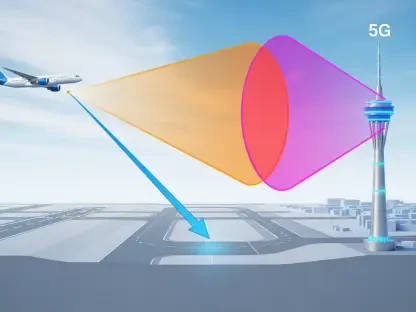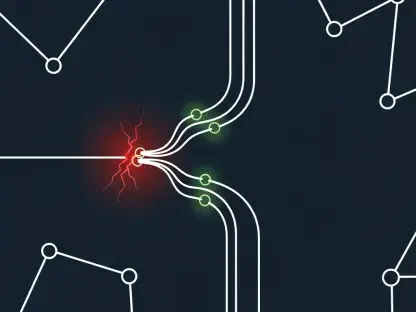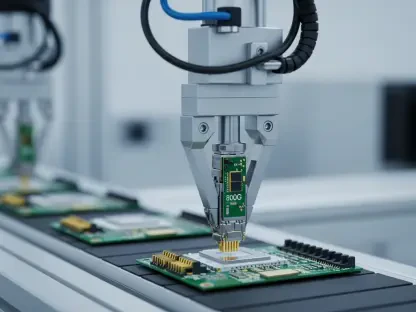In an industry where technology is rapidly evolving, telecommunications specialist Vladislav Zaimov stands at the forefront, offering key insights into enterprise telecommunications and managing network vulnerabilities. Today, we delve into the strategic directions of Fujitsu’s new venture, 1FINITY, and explore the future landscape of network technology.
Can you elaborate on the strategic vision behind the launch of 1FINITY and how it aligns with Fujitsu’s medium-term management plan?
The launch of 1FINITY is very much a strategic pivot for Fujitsu. It’s designed to consolidate and streamline our network products into a new, focused entity. The vision here aligns deeply with Fujitsu’s broader management plan to transform into a leading digital services technology company by 2030. By honing in on advanced telecommunications technologies and responding quickly to market demands, we aim to strengthen our product offerings and effectively contribute to digital infrastructure evolution.
Why was the year 2025 chosen for the launch of 1FINITY, and what key steps will be taken to ensure a successful transition?
2025 is a strategic timeline that allows us to lay a solid foundation for transitioning our current operations into 1FINITY. It’s not just about timing; it’s about ensuring that we have the right capabilities and infrastructure in place. The key steps will involve carefully planned integrations of our group companies, refining our technological offerings, and setting up robust global operational processes to ensure we hit the ground running.
How will consolidating Fujitsu’s network-related operations into 1FINITY improve competitiveness in the global market?
By bringing together our network operations under 1FINITY, we harness a more cohesive strategy that boosts our competitive edge globally. This consolidation facilitates a more agile approach, enhancing our capability to innovate and respond to international market demands swiftly.
What specific advantages does 1FINITY have over other players in the network products market?
1FINITY distinguishes itself with its focus on high-capacity optical transmission and 5G hardware, both of which are critical to modern networks. Our commitment to building a robust AI and 6G-ready portfolio sets us apart, as these technologies will drive the next wave of telecommunications advancement.
How will 1FINITY accelerate decision-making compared to the current structure?
The streamlined structure of 1FINITY allows for a more direct and swift decision-making process. With dedicated teams solely focused on network products, we eliminate layers of hierarchy that often slow down processes, enabling us to innovate and adapt more quickly.
What role will AI and 6G-ready technologies play in 1FINITY’s product offerings?
AI and 6G technologies are at the heart of 1FINITY’s product development. They’re not just add-ons; they’re integral to reshaping how networks operate. Our aim is to dramatically enhance network efficiency and capacity through these technologies.
Can you provide examples of how these technologies will be integrated into your products?
Certainly. For instance, AI can be integrated into our network management systems to predict and preemptively resolve issues before they affect users, improving overall reliability and performance. The push towards 6G will enable ultra-fast, high-capacity data transfers, which is crucial for the future of mobile and cloud services.
How does 1FINITY plan to expand its market presence globally, especially in Europe and Asia?
Our expansion will leverage strategic partnerships and local market insights. By establishing strong collaboration with regional partners, we aim to penetrate European and Asian markets more effectively. This localized strategy helps us to tailor our approach and offerings to meet specific regional needs.
What is the significance of transferring Fujitsu’s group companies to 1FINITY, and how will these companies continue to operate post-integration?
Transferring these companies brings a wealth of expertise and resources into 1FINITY, allowing us to maintain continuity and leverage existing strengths. Even post-integration, these companies will continue to operate within their domains but with greater alignment and shared goals under the 1FINITY umbrella.
How will 1FINITY approach new customer segments like cloud infrastructure companies?
Approaching new customer segments requires a strategic, tailored approach. For cloud infrastructure companies, we plan to offer innovative network solutions that enhance their service capabilities, backed by cutting-edge technology.
Are there specific strategies or partnerships in place to engage these segments?
Yes, collaborations with key industry players and technology partners are already underway. These partnerships are designed to extend our reach and provide comprehensive solutions that directly meet the challenges faced by these segments.
Can you explain the role of vRAN development with GPUs in 1FINITY’s growth strategy?
vRAN development using GPUs is pivotal. It provides the computational power necessary for advanced network solutions and supports the dynamic allocation of resources. This capability allows for improved network performance and flexibility, vital for our growth.
In what ways will 1FINITY leverage new technologies such as AI for enhancing network operations?
AI will be instrumental in optimizing network operations. It enables us to implement smarter, automated processes that enhance efficiency and reduce downtime, thereby elevating the utility and performance of our networks on a global scale.
What are the expected outcomes for Fujitsu by launching a new managed service platform for generative AI workloads?
The launch of this platform represents a significant shift towards scalable, secure AI workload management. It’s anticipated to reduce overheads for enterprise customers while offering robust, high-performance infrastructure, ultimately scaling up productivity and innovation.
How was this proposition developed with Super Micro Computer, and what is its anticipated impact?
This proposition was crafted through close collaboration and mutual expertise exchange with Supermicro. It’s expected to set new industry standards for managing AI workloads efficiently, positioning us at the forefront of the digital solution market.
Do you have any advice for our readers?
Embrace innovation and be adaptive. The telecommunications landscape is evolving rapidly, and those who are open to integrating new technologies will lead the way in shaping the next digital era. Always keep an eye on emerging trends and be ready to pivot as necessary.









